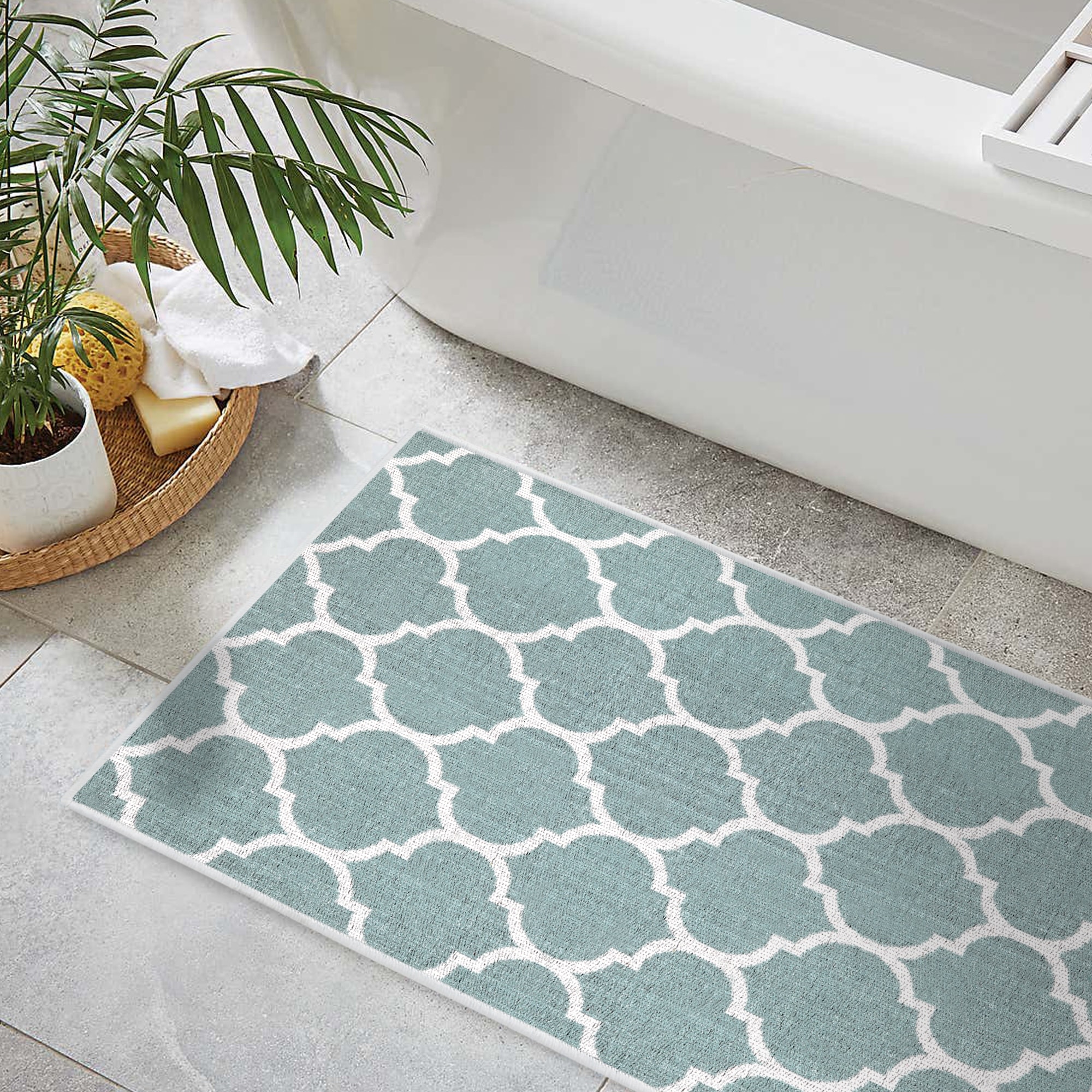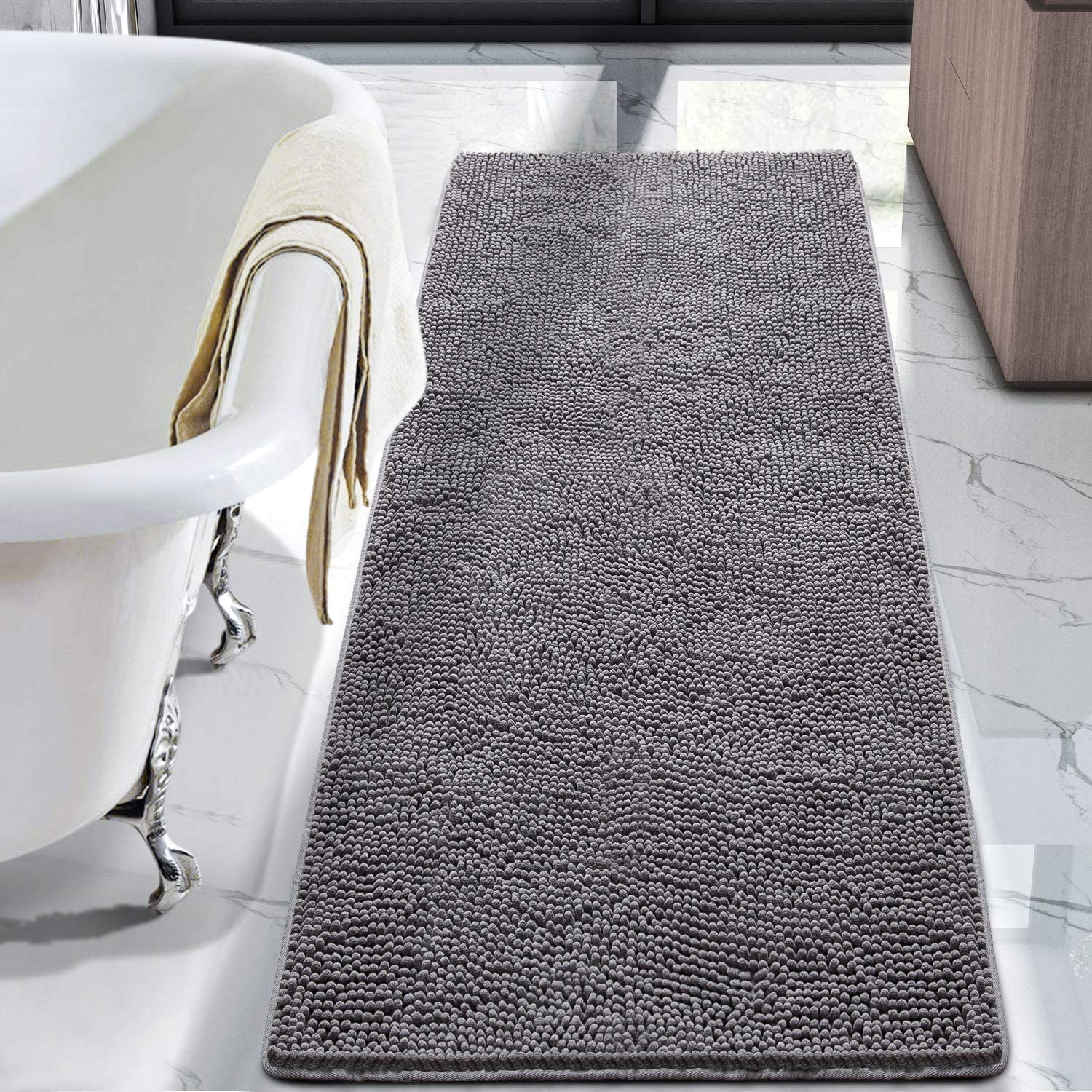Understanding Bathroom Rug Slippage

Stepping out of the shower, you’re feeling refreshed and ready to start your day. But then, your foot hits the bathroom rug, and suddenly, you’re sprawled on the floor. Sound familiar? This common bathroom mishap is often caused by slippery rugs, which can be a serious safety hazard.
Causes of Bathroom Rug Slippage
Slippery bathroom rugs can be a real pain, literally! Let’s delve into the common culprits behind this slippery situation.
- Wet Surfaces: The most obvious culprit is water. After a shower or bath, the floor can become wet, making even the most grippy rug prone to slippage.
- Rug Materials: Certain materials, like plush or soft rugs, can be more susceptible to slippage than others. These materials often have a smooth surface that doesn’t offer enough friction against a wet floor.
- Incorrect Placement: Even the best rug can become a slipping hazard if it’s not placed correctly. If the rug doesn’t fully cover the wet area, the edges can easily become a slippery trap.
Potential Hazards, How to make bathroom rugs non slip
Slippery bathroom rugs can lead to a range of hazards, from minor stumbles to serious injuries.
- Falls: The most common hazard is, of course, falling. Slipping on a wet rug can send you tumbling, especially if you’re not expecting it.
- Injuries: Falls can lead to various injuries, ranging from minor bruises and sprains to more serious fractures and head injuries.
Bathroom Rug Materials and Slip Resistance
The material of your bathroom rug plays a crucial role in its slip resistance. Here’s a breakdown of common materials and their slip-resistance properties:
- Cotton: Cotton is a soft and absorbent material, but it can become quite slippery when wet.
- Polyester: Polyester is generally more water-resistant than cotton, but it can still be slippery when wet, especially if it’s a smooth, plush material.
- Rubber: Rubber is known for its excellent slip resistance, even when wet. Rubber-backed rugs are a popular choice for bathrooms because they provide a stable and secure base.
- Microfiber: Microfiber is a synthetic fabric that is both absorbent and quick-drying. It’s often used in rugs designed for bathrooms, and it generally offers good slip resistance.
Non-Slip Solutions for Bathroom Rugs: How To Make Bathroom Rugs Non Slip

You’ve conquered the slippery slope of understanding why bathroom rugs slip, now it’s time to tackle the solutions! Let’s dive into the world of non-slip rug solutions, where your bathroom floor will finally be your friend, not your foe.
Rug Pads: The Unsung Heroes
Rug pads are like the superheroes of the bathroom rug world, quietly working behind the scenes to keep your rug in place. These pads are made from a variety of materials, including rubber, felt, and even recycled materials. They work by creating friction between the rug and the floor, preventing any unwanted sliding.
Here’s a breakdown of some popular rug pads:
| Rug Pad | Material | Dimensions | Key Features |
|---|---|---|---|
| Non-Slip Rug Pad by Rug Grippers | Rubber | Various sizes | Durable, washable, and can be trimmed to fit your rug. |
| Felt Rug Pad by Rug Doctor | Felt | Various sizes | Soft, absorbent, and helps protect your floor from scratches. |
| Eco-Friendly Rug Pad by Green Home | Recycled materials | Various sizes | Environmentally friendly, durable, and provides excellent grip. |
Rug pads offer a good balance of cost, durability, and ease of application. They’re generally affordable, can last for years, and are simple to install – just place the pad under your rug and you’re good to go!
Adhesive Backing: Sticky Situation Solved
If you’re looking for a more permanent solution, adhesive backing might be your best bet. These rugs have a special backing that adheres to the floor, creating a strong bond that won’t budge. They’re a great option for high-traffic areas or if you have a particularly slippery floor.
Specialized Rug Materials: Built-In Grip
Some rugs are designed with non-slip features built right in. These rugs often have a textured backing or are made from materials like rubber or vinyl that naturally provide a good grip. These rugs are a convenient option, as you don’t need to worry about additional pads or adhesive.
Remember, when choosing a non-slip solution, consider your specific needs and preferences. Some people prefer the convenience of adhesive backing, while others may prefer the versatility of rug pads. Ultimately, the best solution is the one that provides you with the peace of mind you need to avoid any slippery mishaps!
Practical Tips for Preventing Rug Slippage
Now that we’ve tackled the “why” and “how” of bathroom rug slippage, let’s dive into the practical tips that will keep your rugs firmly in place, preventing any unwanted slips and slides.
Choosing the Right Rug Size
Selecting the right rug size is crucial for preventing slippage. A rug that’s too small can easily bunch up or slide around, especially on a slippery bathroom floor. On the other hand, a rug that’s too large can become a tripping hazard.
- Measure your bathroom floor and choose a rug that’s large enough to cover the area where you’ll be standing, but not so large that it extends into high-traffic areas. For example, if you have a small bathroom, a 20″ x 30″ rug might be ideal, while a larger bathroom could accommodate a 24″ x 36″ rug.
- Consider the shape of your bathroom. A rectangular rug might be the best option for a long and narrow bathroom, while a round rug might be more suitable for a square or circular space.
- Think about the layout of your bathroom. If you have a bathtub or shower, make sure the rug is positioned so that it’s not a tripping hazard when getting in or out.
Ensuring Proper Rug Placement
Once you’ve chosen the right rug size, it’s essential to place it correctly. Proper placement can significantly reduce the chances of slippage.
- Place the rug on a dry, clean floor. Moisture or debris can make the rug more prone to slipping. Wipe down the floor before placing the rug.
- Avoid placing the rug on a raised surface. This can create a tripping hazard and make the rug more likely to slip.
- Ensure the rug is flat and even. If the rug is bunched up or uneven, it’s more likely to slip.
Maintaining a Clean and Dry Bathroom Floor
A clean and dry bathroom floor is key to preventing rug slippage.
- Wipe down the floor regularly with a damp cloth or mop. This will remove any dirt, dust, or hair that can make the floor slippery.
- Avoid using harsh chemicals on the floor, as they can damage the floor surface and make it more slippery.
- Ensure the floor is dry before placing the rug. This will help prevent the rug from slipping.
Cleaning and Maintaining Bathroom Rugs
Regular cleaning and maintenance are essential for keeping your bathroom rugs non-slip.
- Wash your rug regularly according to the manufacturer’s instructions. Most bathroom rugs can be machine-washed, but check the label to be sure.
- Use a mild detergent when washing your rug. Harsh detergents can damage the rug fibers and make it more prone to slipping.
- Air-dry your rug completely after washing. Do not put it in a dryer, as the heat can damage the rug fibers.
Installing Non-Slip Rug Pads or Adhesive Backing
For extra peace of mind, consider using non-slip rug pads or adhesive backing. These products are designed to help prevent rugs from slipping on hard surfaces.
Installing Non-Slip Rug Pads
- Choose a rug pad that’s the right size for your rug. The rug pad should be slightly smaller than the rug so that it doesn’t show around the edges.
- Place the rug pad on the floor where you want to place the rug.
- Place the rug on top of the rug pad. Make sure the rug is centered and evenly distributed on the pad.
Installing Adhesive Backing
- Choose a rug adhesive backing that’s suitable for your rug and floor type. Some adhesive backings are specifically designed for bathroom rugs.
- Apply the adhesive backing to the bottom of the rug according to the manufacturer’s instructions. Be sure to apply the adhesive evenly and avoid getting it on the rug fibers.
- Let the adhesive dry completely before placing the rug on the floor. This will ensure that the adhesive is secure and the rug won’t slip.
